
ECOCIDE
noun
destruction of the natural environment, especially when deliberate.
International Atomic Energy Agency
(IAEA)

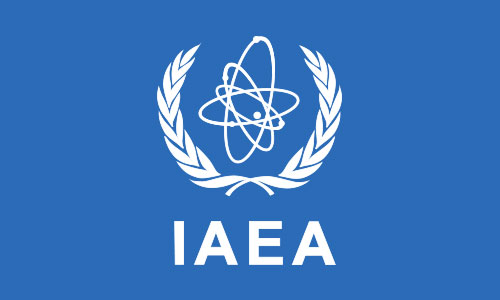
The International Atomic Energy Agency (IAEA) is an international organization that seeks to promote the peaceful use of nuclear energy, and to inhibit its use for any military purpose, including nuclear weapons. The IAEA was established as an autonomous organization on 29 July 1957. Though established independently of the United Nations through its own international treaty, the IAEA Statute, the IAEA reports to both the United Nations General Assembly and Security Council.
Based in Vienna, the IAEA serves as an intergovernmental forum for scientific and technical co-operation on the peaceful use of nuclear technology and nuclear power worldwide. The programs of the IAEA encourage the development of the peaceful applications of nuclear energy, science, and technology, provide international safeguards against misuse of nuclear technology and nuclear materials, and promote nuclear safety (including radiation protection) and nuclear security standards and their implementation.
Structure and function
The IAEA’s mission is guided by the interests and needs of Member States, strategic plans, and the vision embodied in the IAEA Statute (see below). Three main pillars – or areas of work – underpin the IAEA’s mission: Safety and Security; Science and Technology; and Safeguards and Verification.
The IAEA as an autonomous organization is not under the direct control of the UN, but the IAEA does report to both the UN General Assembly and Security Council. Unlike most other specialized international agencies, the IAEA does much of its work with the Security Council, and not with the United Nations Economic and Social Council. The structure and functions of the IAEA are defined by its founding document, the IAEA Statute (see below). The IAEA has three main bodies: the Board of Governors, the General Conference, and the Secretariat.
The IAEA exists to pursue the “safe, secure and peaceful uses of nuclear sciences and technology” (Pillars 2005). The IAEA executes this mission with three main functions: the inspection of existing nuclear facilities to ensure their peaceful use, providing information and developing standards to ensure the safety and security of nuclear facilities, and as a hub for the various fields of science involved in the peaceful applications of nuclear technology.
The IAEA recognizes knowledge as the nuclear energy industry’s most valuable asset and resource, without which the industry cannot operate safely and economically. Following the IAEA General Conference since 2002 resolutions the Nuclear Knowledge Management, a formal program was established to address Member States’ priorities in the 21st century.
In 2004, the IAEA developed a Programme of Action for Cancer Therapy (PACT). PACT responds to the needs of developing countries to establish, to improve, or to expand radiotherapy treatment programs. The IAEA is raising money to help efforts by its Member States to save lives and reduce the suffering of cancer victims.
The IAEA has established programs to help developing countries in planning to build systematically the capability to manage a nuclear power program, including the Integrated Nuclear Infrastructure Group, which has carried out Integrated Nuclear Infrastructure Review missions in Indonesia, Jordan, Thailand and Vietnam. The IAEA reports that roughly 60 countries are considering how to include nuclear power in their energy plans.
To enhance the sharing of information and experience among IAEA Member States concerning the seismic safety of nuclear facilities, in 2008 the IAEA established the International Seismic Safety Centre. This centre is establishing safety standards and providing for their application in relation to site selection, site evaluation and seismic design.
The IAEA has its headquarters in Vienna, Austria. The IAEA has two “Regional Safeguards Offices” which are located in Toronto, Canada, and in Tokyo, Japan. The IAEA also has two liaison offices which are located in New York City, United States, and in Geneva, Switzerland. In addition, the IAEA has laboratories and research centers located in Seibersdorf, Austria, in Monaco and in Trieste, Italy.
Nuclear safety
The IAEA classifies safety as one of its top three priorities. It spends 8.9 percent of its 352 million-euro ($469 million) regular budget in 2011 on making plants secure from accidents. Its resources are used on the other two priorities: technical co-operation and preventing nuclear weapons proliferation.
The IAEA itself says that, beginning in 1986, in response to the nuclear reactor explosion and disaster near Chernobyl, Ukraine, the IAEA redoubled its efforts in the field of nuclear safety. The IAEA says that the same happened after the Fukushima disaster in Fukushima, Japan.
In June 2011, the IAEA chief said he had “broad support for his plan to strengthen international safety checks on nuclear power plants to help avoid any repeat of Japan’s Fukushima crisis”. Peer-reviewed safety checks on reactors worldwide, organized by the IAEA, have been proposed.
Criticism
In 2011, Russian nuclear accident specialist Iouli Andreev was critical of the response to Fukushima, and says that the IAEA did not learn from the 1986 Chernobyl disaster. He has accused the IAEA and corporations of “wilfully ignoring lessons from the world’s worst nuclear accident 25 years ago to protect the industry’s expansion”. The IAEA’s role “as an advocate for nuclear power has made it a target for protests”.
The journal Nature has reported that the IAEA response to the 2011 Fukushima Daiichi nuclear disaster in Japan was “sluggish and sometimes confusing”, drawing calls for the agency to “take a more proactive role in nuclear safety”. But nuclear experts say that the agency’s complicated mandate and the constraints imposed by its member states mean that reforms will not happen quickly or easily, although its INES “emergency scale is very likely to be revisited” given the confusing way in which it was used in Japan.
Some scientists say that the Fukushima nuclear accidents have revealed that the nuclear industry lacks sufficient oversight, leading to renewed calls to redefine the mandate of the IAEA so that it can better police nuclear power plants worldwide. There are several problems with the IAEA says Najmedin Meshkati of University of Southern California:
It recommends safety standards, but member states are not required to comply; it promotes nuclear energy, but it also monitors nuclear use; it is the sole global organisation overseeing the nuclear energy industry, yet it is also weighed down by checking compliance with the Nuclear Non-Proliferation Treaty (NPT).
In 2011, the journal Nature reported that the International Atomic Energy Agency should be strengthened to make independent assessments of nuclear safety and that “the public would be better served by an IAEA more able to deliver frank and independent assessments of nuclear crises as they unfold”.
Source: Wikipedia
False Flag
A false flag is a covert operation designed to deceive; the deception creates the appearance of a particular party, group, or nation being responsible for some activity, disguising the actual source of responsibility.
4.6 – IAEA Headquarters
(Vienna, Austria)
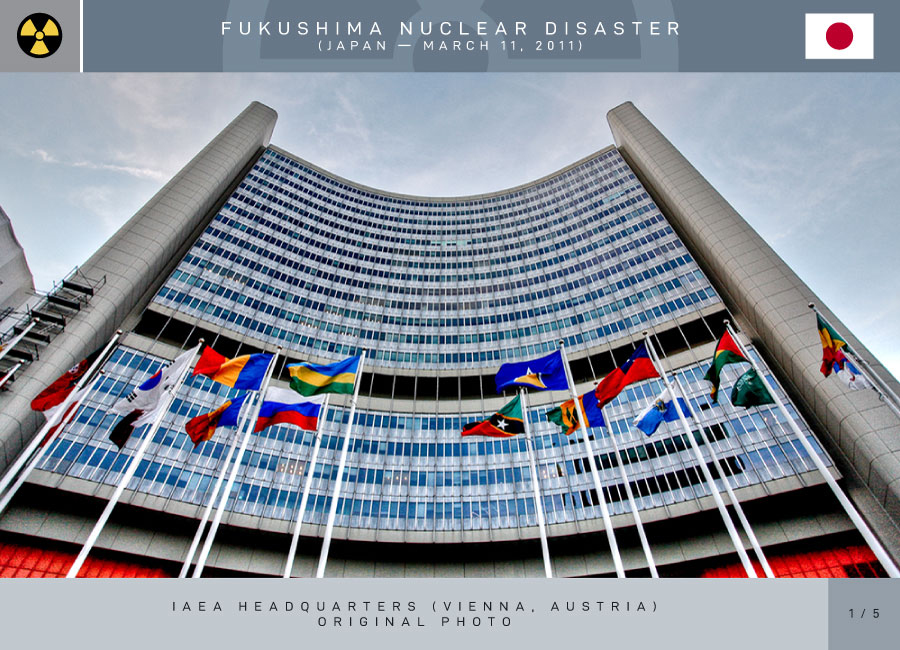
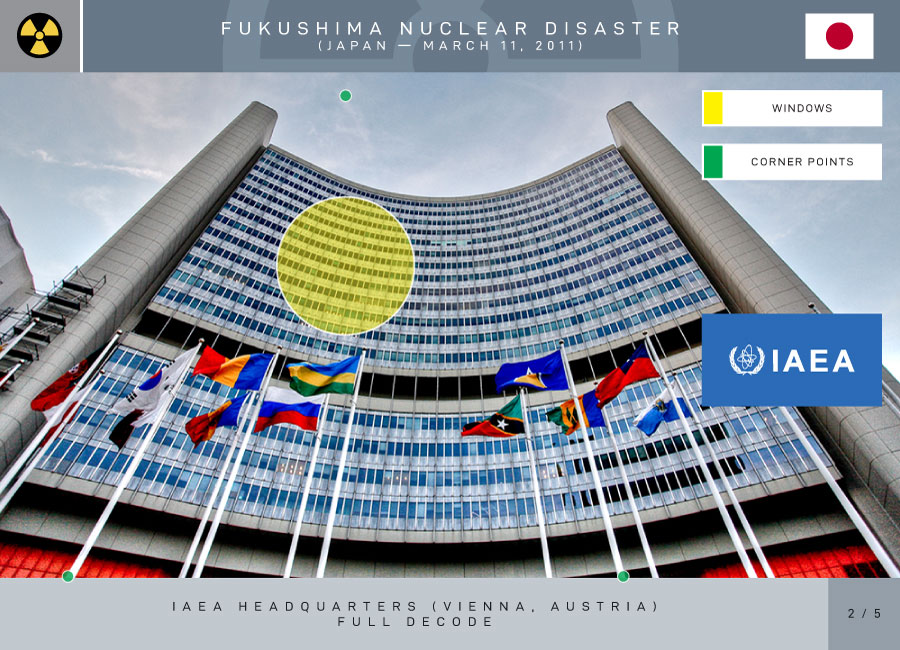

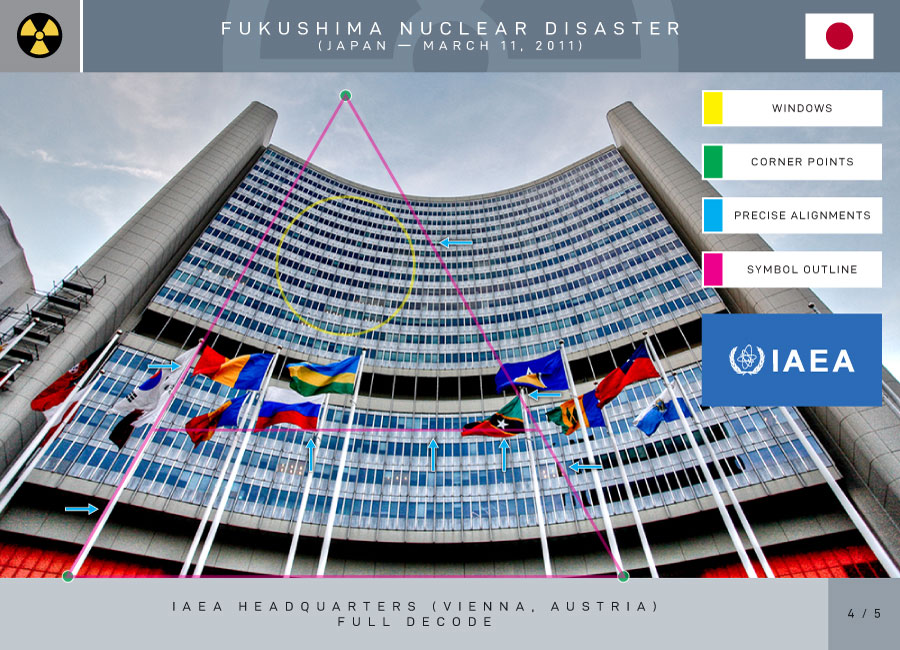
Subliminal Symbolism
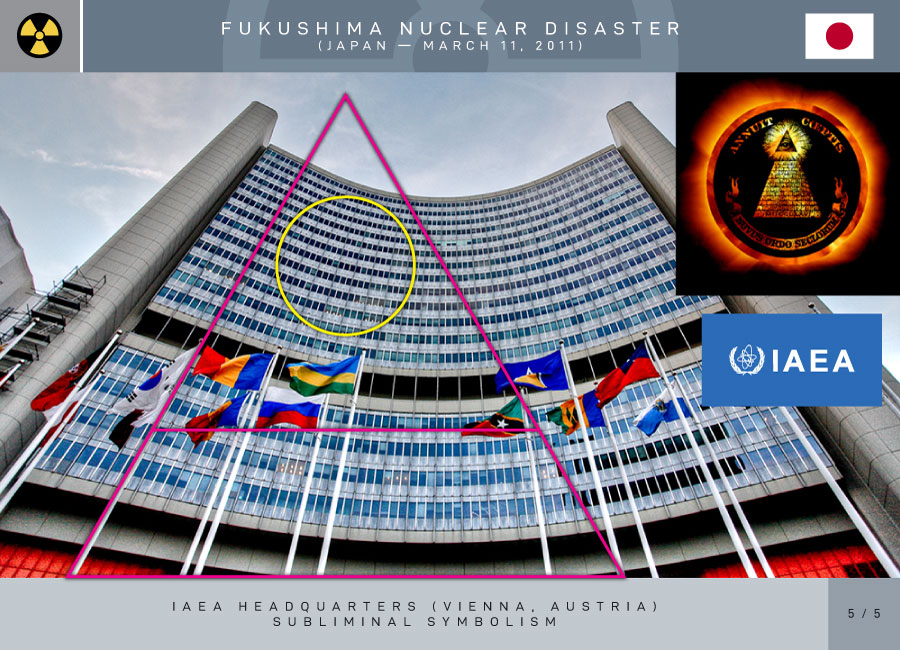
The Invisible Symbol
Historical Truth

Continue Reading (Part 4.7)

END RADIOACTIVE DUMPING

SAVE THE OCEANS
HOLD THEM ALL ACCOUNTABLE
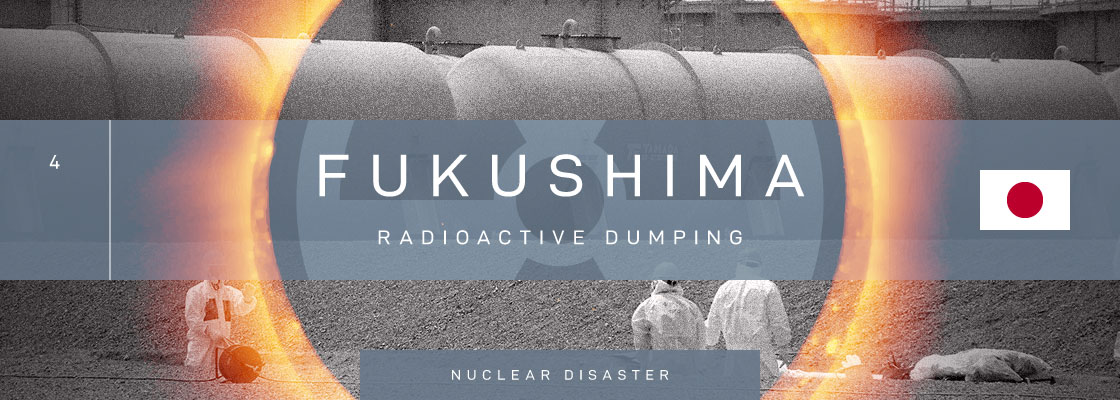


You must be logged in to post a comment.